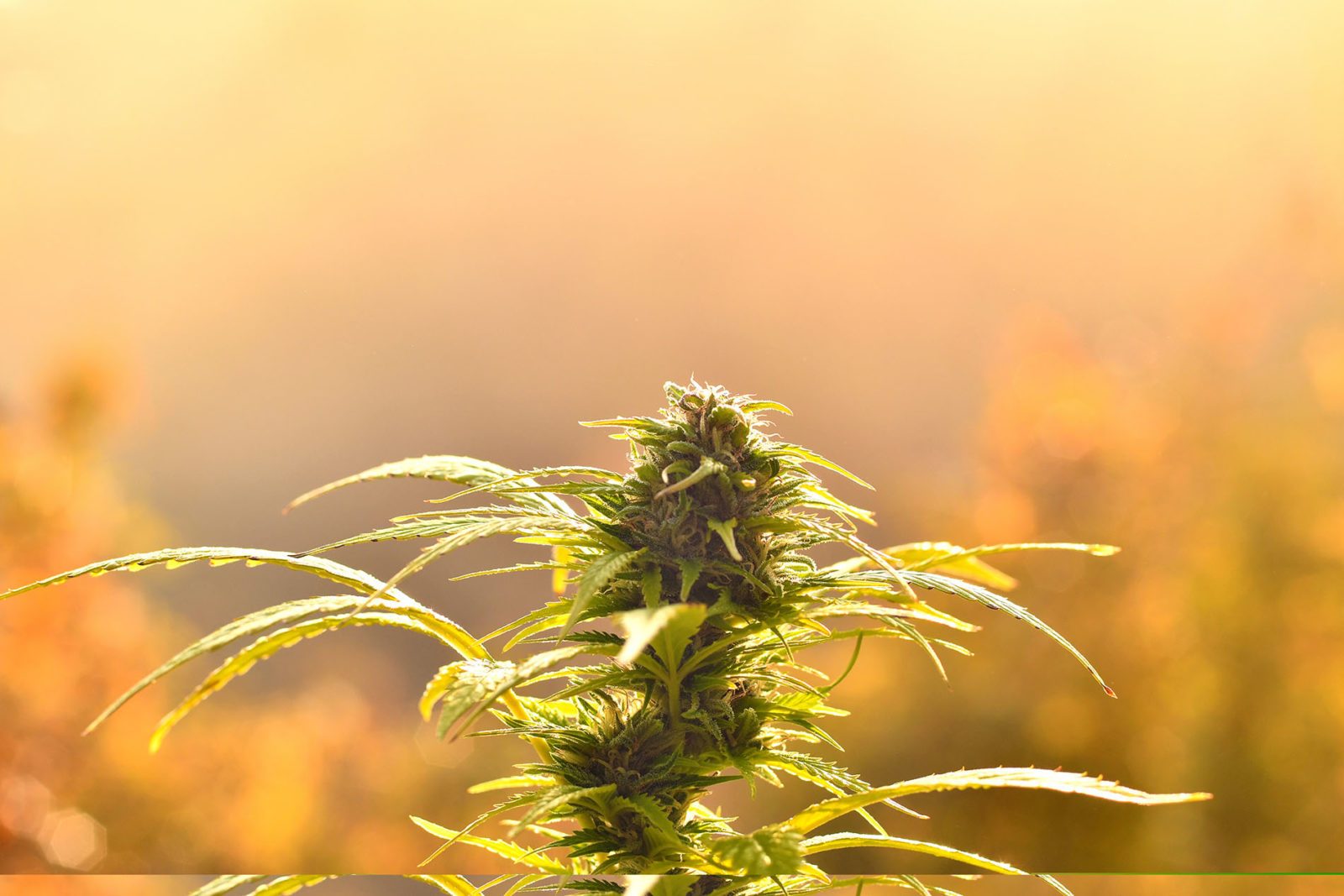
The 2018 Farm Bill has most people in the hemp and CBD industry ecstatic. As a customer, you probably haven’t taken the time to read a 1,000-page U.S. Senate bill to figure out what it means for your favorite CBD products—and that’s okay. We did the heavy lifting for you (but if you want to look it over yourself, you can download the bill as a PDF for free here).
Here’s a quick primer on the Farm Bill, the history of cannabis regulation in the US, and why this new bill could mean massive growth for the CBD industry.
What is the Farm Bill?
The United States legislature drafts a new farm bill every five years. It’s an ‘omnibus’ bill in that it covers a wide range of regulations, ranging from agriculture to food and nutrition programs and conservation—everything the United States Department of Agriculture is in charge of.
The first farm bills were drafted during the Great Depression to provide financial assistance to struggling farmers. At the time, farmers were getting hit hard by surpluses that drove prices down and made their main source of income essentially worthless. The Agricultural Adjustment Act was signed into law in 1933 as part of Franklin D. Roosevelt’s New Deal. It curbed the price problem by paying farmers to not plant crops on parts of their land and also let the government buy up excess crops like wheat. It also included a nutrition program that would be the precursor for food stamps.
The five-year renewal rule was added in 1938’s Agricultural Adjustment Act, and since then the farm bill has been the avenue for major decisions on subsidies, regulations, and nutrition programs. As such, every farm bill is instrumental in setting the course for the agricultural industry—whether it’s through maintaining the status quo or introducing new legislation.
How Does the Farm Bill Affect Hemp?
Growing industrial hemp was legal for a large portion of America’s history. In fact, throughout the 19th and early 20th centuries, hemp oil tinctures were extremely common on pharmacy shelves. A series of legislative moves culminating with the Controlled Substances Act of 1970 made the use, sale, and possession of any and all forms of cannabis illegal in the United States.
The Controlled Substances Act laid the groundwork for drug policy to this day: the Drug Enforcement Administration and narcotics scheduling system are both byproducts of the CSA. The bill classified cannabis as a schedule one narcotic, meaning it (in the eyes of the federal government) had no medicinal or research value.
The tide didn’t start to turn back until the 1990s, when a number of factors including the discovery of the endocannabinoid system and a shift in public perception slowly made medical cannabis more appealing. The first big victory for cannabis came in 1996 with California’s Compassionate Care Act. Since then, states passed varying measures making cannabis for medicinal or recreational uses legal or decriminalized.
It is only during the last few decades that the distinction between the two types of cannabis—marijuana and industrial hemp—has taken a center role in legislation. Much of this was brought on by early CBD products that proved effective in treating conditions like epilepsy. These developments helped push the federal government to take a stance on cannabis in 2014.
The 2014 Farm Bill
The first big win for the hemp industry on the federal level came in the form of the 2014 Farm Bill, section 7606, “Legitimacy of Industrial Hemp Research.” This bill defined industrial hemp as a different plant than marijuana, distinguishable by THC content. It also allowed for US educational institutions and state agricultural departments to regulate and create pilot programs and research industrial hemp growing for the first time since 1937.
This opened the door for a number of hemp farms to pop up across the country, at least in those places where local legislators were keen to the industry. With the increase in hemp production came companies trying to get in on the ground floor with retail products ranging from tinctures to salves to vape cartridges.
The industry took off, despite continued legal challenges and confusing red tape put up by both state and federal regulators. The US hemp industry grew from around $400 million in product sales in 2014 to $820 million by 2017, and Hemp Business Journal predicts that will continue to rise to around $2 billion by 2022.
Hemp won itself another victory in 2017 when the Appropriations Act included section 773, which cut off funding at the federal level for efforts to crack down on legal hemp businesses, including growers, manufacturers, shippers, retailers, and users. While the DEA still classified hemp in the same category as marijuana, the actual effort to do anything about it had all but come to a halt.
What’s New In The 2018 Farm Bill?
2018 meant it was time to reauthorize the farm bill (the last one was written in 2013 and signed into law in 2014, so we’re still on that five-year renewal schedule set in 1938). The $867-billion bill passed the Senate and House in mid-December, and was signed into law by President Trump on December 20, 2018.
The 2018 Farm Bill formally removed hemp from the Controlled Substances Act, making it legally distinct from marijuana plants. Industrial hemp—those cannabis plants with less than 0.3% THC by volume—is now under the regulation of the Department of Agriculture.
The law comes with its own complicated bureaucracy, however. Under the new law, states are required to send a written plan to the US Department of Agriculture on how they will implement hemp cultivation and production within the state. If the state doesn’t send one, it’s up to the growers themselves to submit a proposal. As Rolling Stone points out, we still haven’t seen if this will be a barrier to entry, or just a formality everyone breezes through.
Secondly, the new law puts a 10-year ban on anyone convicted of a drug felony working in the hemp industry, enforced from the date of their conviction. Earlier drafts of the bill had started with a lifetime ban.
Last but not least, the bill still leaves wiggle room for states to pass their own, more stringent laws (think how alcohol is legal on a federal level, but there are still dry counties). Those “dry counties” for hemp appear to be Idaho, Nebraska, and South Dakota. Idaho and Nebraska codified laws banning all forms of cannabis, where South Dakota has specifically banned CBD products.
Is This A Good Thing for Hemp?
At the moment it appears so. The CSA has been a huge burden on the hemp industry in general for decades, and lifting at least some regulations should help the industry take off. There are still a lot of unanswered questions about actually implementing the law, but we should see those questions answered in the coming months. Either way, it makes things much easier for industrial hemp farmers to get an operation off the ground, and local news stories from agricultural areas from Michigan to Kansas show an enthusiasm for a new cash crop.
Descheduling industrial hemp is going to open the door for further research, product development, and bolster the legitimacy of the industry. Now that the legal gray area is less gray, more people will be jumping at the chance to get involved with a rapidly growing industry. Further research can help us understand the unique properties of each cannabinoid, terpene, and flavonoid, which could allow for the creation of strains designed to treat specific conditions. More growers and manufacturers means a more diverse range of strains and products available on the marketplace. Lastly, this sort of federal approval means your doctor might be more open to talking about or recommending alternative treatments like CBD tinctures and salves.
What Does This Mean For Me?
If you’re already using CBD products, the only thing that may change is prices due to competition or an increased availability of products as they become more popular—it’s really hard to predict the direction the market will take. You may have a couple relatives or friends whose interests are piqued by news reports on the CBD industry who will ask for recommendations.
Ultimately, the biggest change is going to be for farmers who are eager to start cultivating hemp on their land. It will, presumably, be much easier to begin growing and processing hemp now. This will provide an economic boost to some people who desperately need it and simultaneously increase the variety of strains and products on the market.
Further study will likely pull back the veil on a number of cannabis’ mysteries. Once we have a better understanding of how it actually works, we will be able to more effectively craft products for specific customers with the exact dosage they need of particular compounds.
This bill is a massive step forward for the hemp industry as a legitimate business in the eyes of the American public, and—pending any new roadblocks state legislatures or large pharmaceutical companies throw up—it should only serve to benefit growers, manufacturers, and customers.



